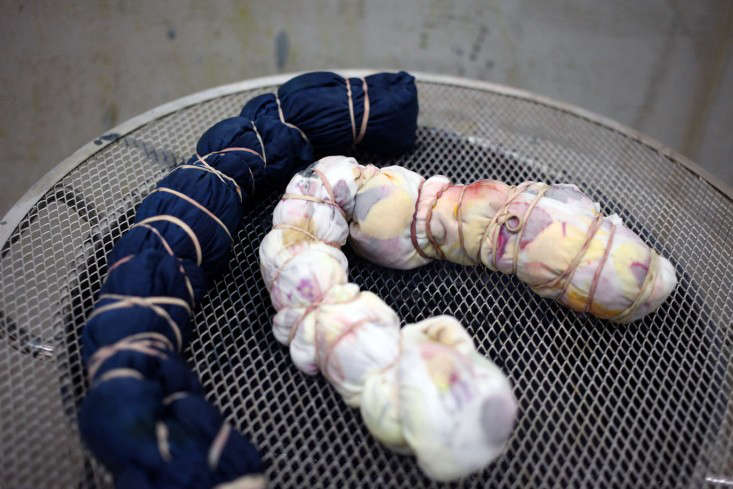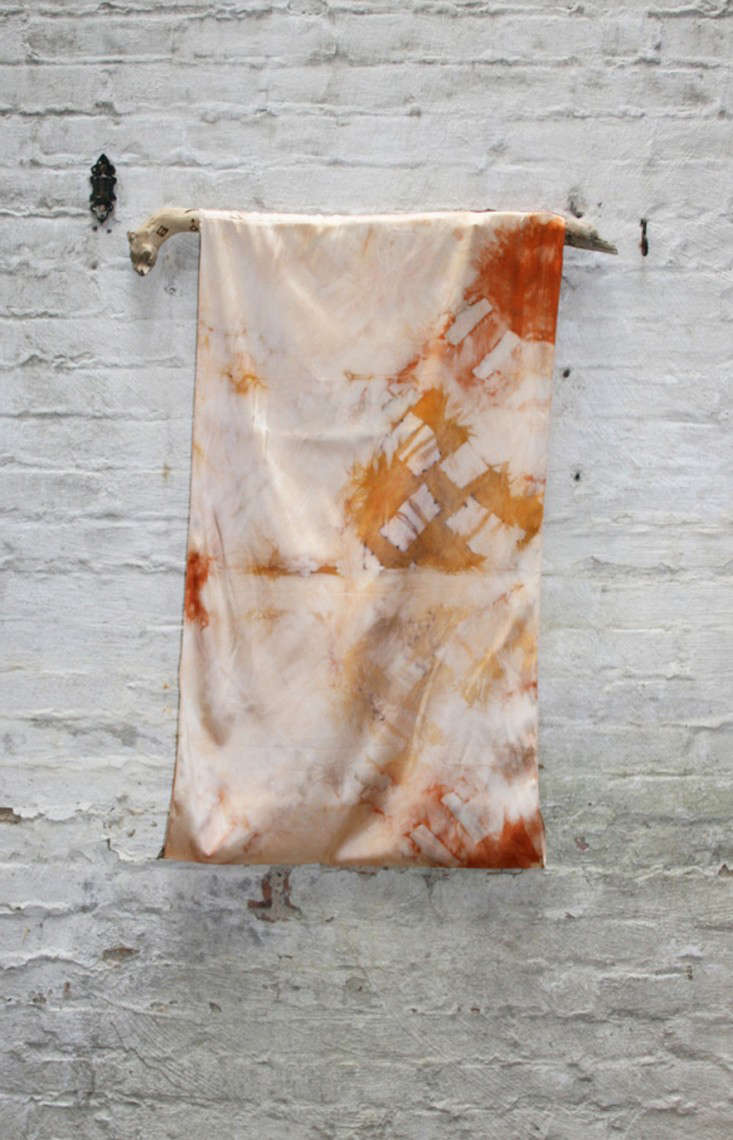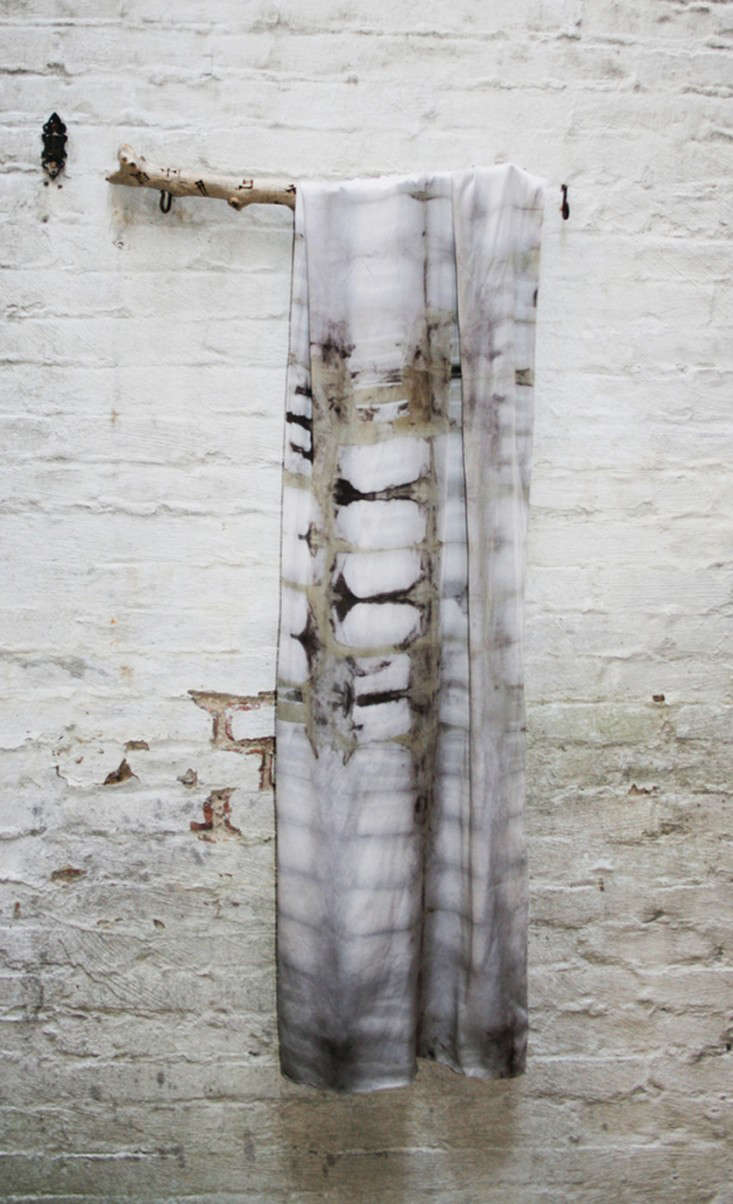As a florist and flower lover, I like to see flowers put to good use. The downside of working in the world of floral design is that there’s a considerable amount of floral waste. Leftover flower scraps and past-their-prime blossoms too often find their way to the landfill.
I hate to see them go, even when blooms are old, dying, and no longer suitable for making arrangements. I especially hate it when I think about how many flowers get thrown away every day. So when I heard that Cara Marie Piazza, a textile designer in New York City, uses floral trash as one of the many ingredients for her natural dyes, I had to learn more.
A trip to her studio confirmed that I have a newfound obsession with her work.
Photography by Sophia Moreno-Bunge for Gardenista, except where noted.

Above: Cara Marie Piazza’s natural dye studio.
On a mission to find sustainable alternatives to the harsh synthetic chemicals and dyes used in the fashion industry, Cara collects floral leftovers from florists around New York City and uses them to dye her fabrics, transforming trash into textiles worth treasuring. Each textile she sells online at Cara Marie NYC is one of a kind–some with colors that serve as reminders of the flowers’ past vibrancy, and others in softer, more subtle hues.

Above: Flowers Cara will use for a “bundle” dye.
Cara first experimented in textiles while studying at the Chelsea College of Art and Design in London. She began as a screen and digital printer, but found she didn’t enjoy the process of working on a computer to create textiles. After taking a natural dye workshop, she was hooked. A self-proclaimed brown thumb and a lack of space to grow her own dye plants led Cara to start using flower and food waste as dye. She became addicted to “watching the experiments take form like a witch’s brew.” More than that, she explains: “Natural dyeing offered me a chance to be an urban alchemist and move my work away from my computer.”

Above: Cara making a bundle dye with flower trash rolled onto a white backdrop.

Above: Bundles (rolled with flowers) get steamed over a large vat of water to release the plant dyes onto the fabric.

Above: This textile was dyed for four hours with an assortment of red and green eucalyptus leaves, dahlia, and rose. Then it was dip-dyed in madder and set with white wine vinegar.

Above: Extra flowers that Cara will dry first, and then use as dye.
In addition to culling from the waste piles of New York’s florists, one of Cara’s recent projects involves partnering with NYC restaurants to intercept their food waste. She’s recently partnered with Reynard of the Wythe Hotel in Williamsburg, using the restaurant’s Brussels sprout, cabbage, and onion skin leftovers to make dye.
Above: A silk scarf was dyed with twice-extracted madder and dried hibiscus. Photograph by Alberto Moreau.
Above: A silk scarf in an itajime shibori pattern, dyed with logwood, iron sulphate, madder, and turmeric. Photograph by Alberto Moreau.
Above: A silk scarf dyed with madder, iron sulphate and turmeric in an itajime shibori print. Photography by Alberto Moreau.
Stay tuned: Cara is working on a line of housewares using DIY: Indigo Dye.
Interested in more posts on natural dye? See:
- Make a Natural Fabric Dye With Wisteria.
- DIY: Black Walnut Tie-Dye Napkins.
- Back to Nature: Plant Dyes from Permacouture.














Have a Question or Comment About This Post?
Join the conversation